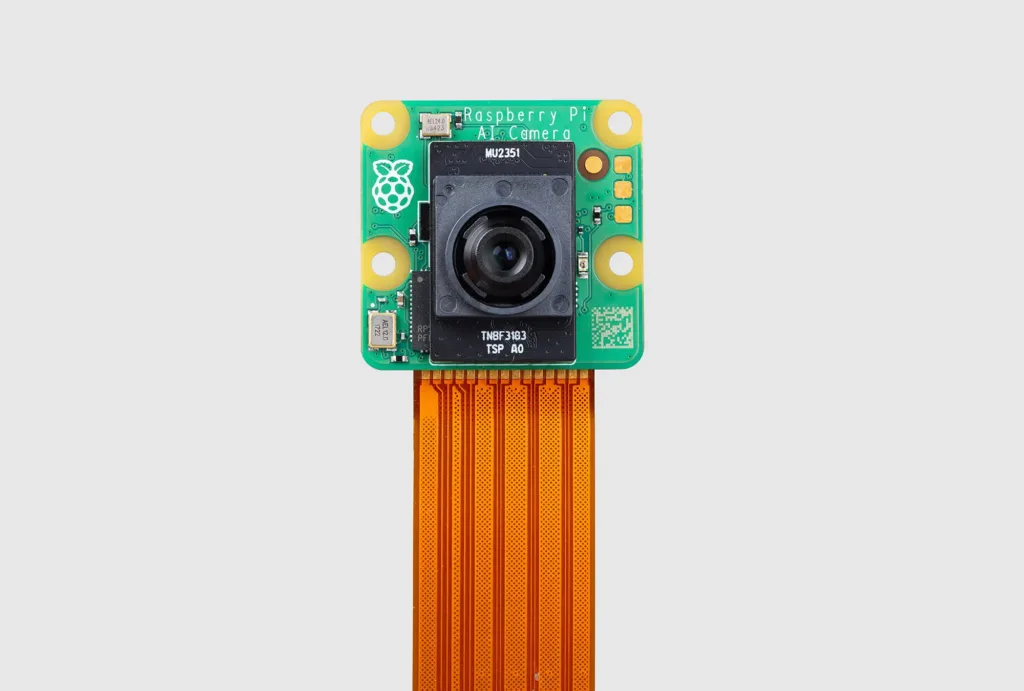Sony Semiconductor Solutions Corporation (SSS) and Raspberry Pi Ltd recently announced the release of a co-developed AI Camera designed to accelerate the development of AI solutions for edge processing.
The new Raspberry Pi AI Camera, priced at $70, integrates advanced AI image processing capabilities and is compatible with the entire range of Raspberry Pi’s single-board computers, including the newly launched Raspberry Pi 5.
Strategic Partnership
The new collaboration follows SSS’s minority investment in Raspberry Pi Ltd in April 2023, marking a deepening of ties between the two companies. The partnership is centered on enabling edge AI for Raspberry Pi’s large developer community.
The AI Camera is the first tangible output of this collaboration, utilizing SSS’s advanced IMX500 intelligent vision sensor. The IMX500’s capability for on-chip AI image processing allows developers to create solutions without additional GPU or AI accelerator hardware, significantly simplifying edge AI solution development.
AI Camera Features and Technology
The Raspberry Pi AI Camera is powered by SSS’s 12.3-megapixel IMX500 intelligent vision sensor, strongly differentiated from conventional camera modules.
The sensor can perform AI-based image analysis directly on the sensor. This powerful capability is enabled by a dedicated neural network processor built into the sensor, allowing it to execute AI models without needing to offload data to a separate GPU or CPU. This dramatically reduces latency, as the image data can be processed immediately as captured, making it ideal for real-time applications.
The camera is fully integrated with Raspberry Pi’s lib-camera and Picamera2 software libraries, providing a seamless development environment for users familiar with the ecosystem. Standard interfaces and connectors allow the camera to be easily integrated with all Raspberry Pi models.
The camera also supports multiple resolution modes, offering 10 frames per second (fps) at 4056 x 3040 and 40 fps at 2028 x 1520 resolution. It has a 76-degree field of view and manual focus adjustment, providing flexibility for various vision tasks.
What is Aitrios?
AITRIOS is Sony Semiconductor Solutions’ edge AI platform, designed to facilitate developing, deploying, and managing AI-powered edge solutions, particularly those leveraging vision AI. Sony’s broader strategy is to enable more efficient and scalable AI processing directly at the edge, rather than relying heavily on centralized cloud computing.
Sony’s AITRIOS is also a platform for collaboration, allowing developers, businesses, and academic institutions to leverage its capabilities to build and deploy innovative edge AI solutions. It supports various AI models and frameworks, making it adaptable for machine learning and deep learning applications. Its platform is part of Sony’s broader strategy to cultivate a global ecosystem around edge AI, enabling developers worldwide to access cutting-edge tools for AI-driven innovation.
Analysis
The Raspberry Pi AI Camera highlights is part of a growing trend of bringing AI to the edge. By moving AI processing closer to the data source, companies bring processing to where data is generated and consumed, minimizing the traditional challenges of latency, privacy concerns, and operational costs associated with cloud-based AI solutions.
For SSS, this product aligns with its broader vision of expanding the AITRIOS edge AI platform. For Raspberry Pi, the partnership strengthens its position as a leading platform for accessible, low-cost computing, now enhanced with sophisticated AI capabilities.
This collaboration also aligns with the trend of developing affordable, integrated AI solutions that cater to both professional and enthusiast markets. It showcases the continued innovation stemming from Sony and Raspberry Pi’s relationship.
By combining SSS’s leading AI sensing technology with Raspberry Pi’s expansive developer ecosystem, the product accelerates the adoption of AI solutions in various applications, from simple DIY projects to complex industrial systems. Its release marks the beginning of a new chapter in edge AI innovation.





